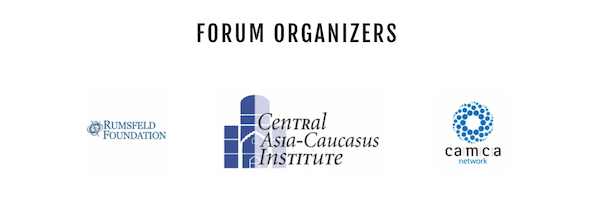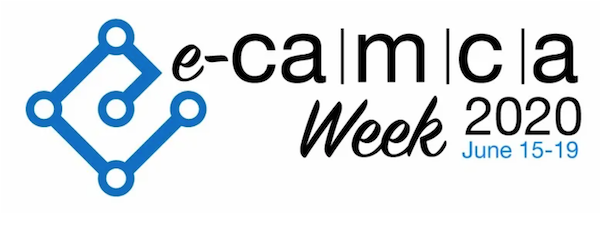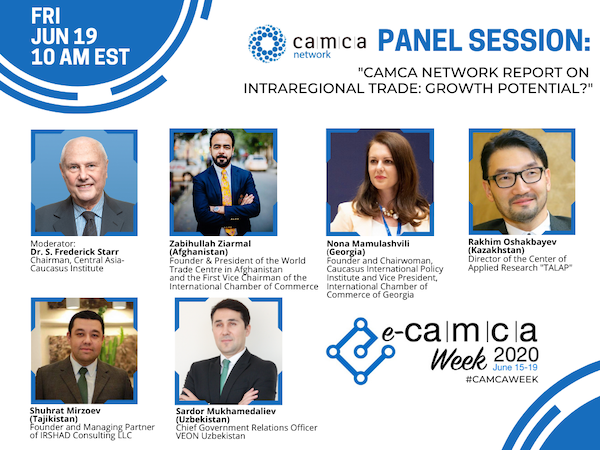[VIDEO POSTED] CACI Online Forum: Regional Economic Outlook for Central Asia and the Caucasus
Regional Economic Outlook for Central Asia and the Caucasus
How have countries of Central Asia and the Caucasus responded to COVID-19 and how are they planning to recover and rebuild? The Central Asia-Caucasus Institute invites you to the presentation of the International Monetary Funds' Regional Economic Outlook for Central Asia and the Caucasus, published on October 19, 2020. This important study offers a positive account of mitigation measures but cautionary words for the future. Our speaker was Dr. Subir Lall, Deputy Director, Middle East and Central Asia Department, International Monetary Fund. S. Frederick Starr chaired and moderated.
When: Monday, December 21, 2020, 10 - 11 AM EST
The event was live-streamed on the CACI Facebook page and is now available on Youtube.
[VIDEO POSTED] CACI Online Forum: America's New Strategy for Central Asia: Is it Happening? With Lisa Curtis, Senior Director, National Security Council
America's New Strategy for Central Asia: Is it Happening?
In February 2020, the U.S. released a new Strategy for Central Asia, subtitled “Advancing Sovereignty and Economic Prosperity.” Since then, the world has changed. How is this Strategy being implemented? This Central Asia-Caucasus Institute Forum discussion will focus on the concrete steps to implement America’s Strategy towards Central Asia.
Our guest speaker Lisa Curtis, Deputy Assistant to the President and Senior Director for South and Central Asia at the National Security Council, The White House, discussed initiatives undertaken as part of the new strategy.
This discussion was Moderated by: S. Frederick Starr, Chairman, Central Asia-Caucasus Institute.
When: Friday, October 16, 2020 at 10am EDT
The event was live-streamed on the CACI Facebook page and is now availabile on Youtube.
Discovering Opportunities in the Pandemic? Four Economic Response Scenarios for Central Asia
Central Asia-Caucasus Institute & Silk Road Studies Program
Silk Road Paper
July 2020
The COVID-19 crisis represents not only an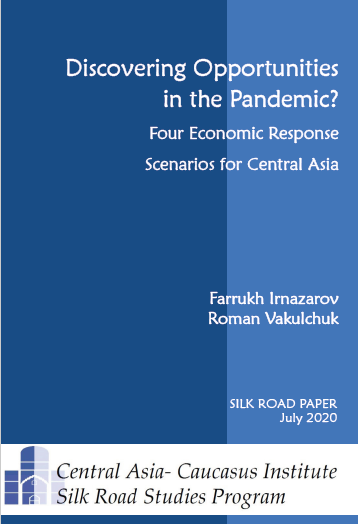 unprecedented economic disruption but also an opportunity for Central Asia. A specific economic policy response may trigger either game-changing reforms that can facilitate the development of full-fledged market institutions or lead to a protracted crisis that would jeopardize almost 30-year long market economy transition progress. As it is rather unclear where the recovery pendulum will make its final swing, the current situation provides fruitful soil for various assumptions. This paper proposes and examines four scenarios of economic response strategies for the region as a whole, and for Kazakhstan, Kyrgyzstan, Tajikistan and Uzbekistan in particular, that result in unique development trajectories. The paper employs the foresight methodology to build four scenarios related to the situation after the lockdown is fully lifted. The scenarios serve the purpose of helping decision makers to embark on informed decisions while shaping anti-crisis measures and better understand causality mechanisms behind their policy choices.
unprecedented economic disruption but also an opportunity for Central Asia. A specific economic policy response may trigger either game-changing reforms that can facilitate the development of full-fledged market institutions or lead to a protracted crisis that would jeopardize almost 30-year long market economy transition progress. As it is rather unclear where the recovery pendulum will make its final swing, the current situation provides fruitful soil for various assumptions. This paper proposes and examines four scenarios of economic response strategies for the region as a whole, and for Kazakhstan, Kyrgyzstan, Tajikistan and Uzbekistan in particular, that result in unique development trajectories. The paper employs the foresight methodology to build four scenarios related to the situation after the lockdown is fully lifted. The scenarios serve the purpose of helping decision makers to embark on informed decisions while shaping anti-crisis measures and better understand causality mechanisms behind their policy choices.
Scenario 1 (Protectionist Autarky): Stability upheld, limited reforms, increased role of the state and protectionism.
Scenario 2 (Impactful Diversification): Increased social support, augmented role of the private sector, comprehensive diversification and enhanced regionalization.
Scenario 3 (Inertial Asymmetry): Selective support measures, inequality-conducive, restricted diversification and limited reforms, “business-as-usual” commodity market, growing regionalization.
Scenario 4 (Unleashed Bazaar): Major institutional reforms, FDI-oriented economic openness, leapfrogging from stagnant to advanced emerging markets.
[Video Posted] CACI Online Forum: Kazakhstan Beyond Headlines: One Year of Mr. Tokayev's Presidency
Kazakhstan Beyond Headlines: One Year of Mr. Tokayev's Presidency
Speakers:
H.E. Yerzhan Ashikbayev, Deputy Minister of Foreign Affairs of Kazakhstan
Ambassador Bolat Nurgaliyev, Deputy Chairman of Foreign Policy Research Institute
Introduction by:
S. Frederick Starr, Chairman, Central Asia-Caucasus Institute at AFPC
Moderator:
Svante Cornell, Director, Central Asia-Caucasus Institute
When: Wednesday, July 8, 2020 at 10am EDT
The event was live-streamed on our Facebook page and is now available on Youtube.
CACI and the Rumsfeld Foundation hosted e-CAMCA Week 2020
In lieu of our in-person annual gathering, the CAMCA Regional Forum organizers are hosting a virtual e-CAMCA Week.
The June 2020 CAMCA Forum, to be held in Almaty, Kazakhstan, was postponed until June 2021. In its place, CACI and the Rumsfeld Foundation organized the e-CAMCA week of online events and publication. Find recordings of the e-CAMCA Week virtual events held over June 15th-19th at the CAMCA Forum YouTube Channel, as well a variety of original #CAMCAweek publications and resources for our CAMCA Forum community at www.camcaforum.org,.

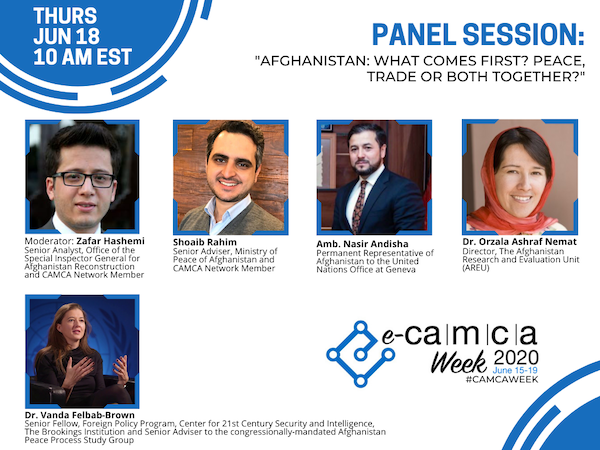
E-CAMCA WEEK PUBLICATIONS
Welcome Letter
Letter from Secretary Donald Rumsfeld
e-CAMCA Week 2020 participants
Meet CAMCA Entrepreneurs
View features of some successful regional entrepreneurs from our CAMCA Network
"Caucasus & Central Asia Post COVID-19" Series- Volume I
Digital Transformation in the CAMCA Region
Post COVID-19: Challeges & Opportunities for the Region
